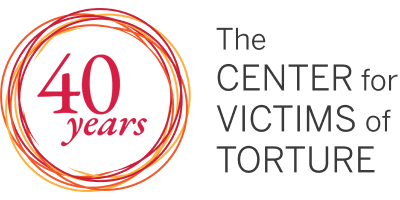Many people associate torture with scars. But torturers have perfected ways of inflicting grave pain without ever leaving a mark on the flesh: forced nakedness and sexual humiliation, stress positions, sleep deprivation, sensory overload, sensory deprivation and mock executions. From a medical and psychological perspective, these abuses constitute torture and cruel, inhuman and degrading treatment.
The following is a summary of torture techniques that individuals intent on using torture sometimes minimize and deny as constituting torture or cruel and ill-treatment. It is important to understand that while physical wounds will heal in time, the mental trauma and internal damage induced by torture, including these techniques, are much more difficult to treat. Some traumas never fully heal. Memories live on as nightmares and flashbacks. To minimize and deny is to distort the cruelty of these techniques, diminish the mental and emotional havoc they wreak on the survivor and ultimately cause moral erosion in society.
This information is based on the expertise of the Center for Victims of Torture and other torture survivor rehabilitation professionals who are familiar with the physical and psychological trauma caused by methods commonly used worldwide by repressive regimes.
Forced Nakedness and Sexual Humiliation
Forced nakedness creates a power differential, stripping the victims of their identity, inducing immediate shame and creating an environment where the threat of sexual and physical assault is always present. The effects of sexual humiliation, including forced nakedness, include posttraumatic stress disorder and major depression. Victims often suffer flashbacks or nightmares about their experiences. The shame, grief and fear felt by male and female survivors are very difficult feelings to overcome.
Forced Stress Positions
Stress positions are commonly used by repressive regimes. These positions force a prisoner into a painful physical position, such as forced standing, awkward sitting positions or suspension of the body for prolonged periods of time. Stress positions can lead to long term or even permanent damage, including nerve, joint and circulatory damage, and muscle and joint pain.
Sleep Deprivation
Depriving a detainee of normal sleep for prolonged periods is often done by using stress positions and sensory overload (bright lights or strobe lights, loud noises or music). The effects of sleep deprivation include taking longer to respond to stimuli, attention deficits, decreases in short-term memory, speech impairments, uncontrolled repetition of words or actions, and inflexible thinking. These symptoms may appear after one night of total sleep deprivation or after only a few nights of sleep restriction (five hours of sleep per night). Sleep deprivation also can result in hypertension and other cardiovascular disease.
Many patients have told me that the fastest way to make someone crazy is to deprive him of sleep; it is far more effective than physical assault.”
-Dr. Andrea Northwood, former CVT director of client services
Sensory Overload
Bombarding the senses with powerful lights (including bright lights, strobe or flashing lights) and loud noises (loud music, screams and constant noise) are used to inflict extreme physical and mental pain. This causes physiological distress, often resulting in withdrawal from reality. Loud music or noise can cause hearing loss or chronic ringing in the ears. Strobe lights can induce stress responses, effecting heart rate and blood pressure. Sensory overload is also used to deprive a prisoner of sleep.
Sensory Deprivation, including Isolation (solitary confinement)
Sensory deprivation includes removing stimuli from one or more of the senses for long periods of time. Isolation denies a detainee contact with other human beings, including other prisoners and prison guards. All forms of sensory deprivation can have profound and long-lasting psychological consequences, including severe anxiety and hallucinations. Effects of isolation (or solitary confinement) include depression, anxiety, difficulty with concentration and memory, hypersensitivity to external stimuli, hallucinations, perception distortions, paranoia and problems with impulse control.
Mock Execution (including waterboarding)
Survivors say mock executions left them feeling they were already dead. Many relive these near-death experiences in their nightmares or flashbacks. Waterboarding is a form of slow, controlled drowning. When detainees are waterboarded, they are strapped down and water is poured over their face to create the sensation of asphyxiation or drowning. Survivors tell CVT they pleaded with their torturers to kill them, preferring real death over the constant threat and intolerable pain caused by mock executions.
